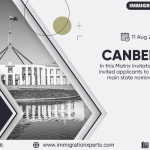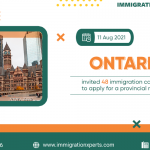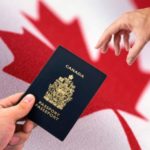
Subclass 191 Visa: Home Affairs Ends Six-Years of Confusion!
After nearly six years of ambiguity, delayed regulations, and widespread uncertainty, the Department of Home Affairs has finally delivered much-needed clarity on the Subclass 191 Permanent Residence (Skilled Regional) visa. This long-anticipated announcement has brought a collective sigh of relief for regional visa holders and migration agents alike.
If you've been holding a Subclass 491 or 494 visa, navigating policy grey areas, or simply waiting for concrete guidance—this article is your roadmap to understanding what the Department’s update means, how to prepare, and what to expect next.
What Is the Subclass 191 Visa?
The Subclass 191 visa is a permanent residency pathway for individuals who have previously held regional provisional visas—specifically the Subclass 491 (Skilled Work Regional – Provisional) and Subclass 494 (Skilled Employer Sponsored Regional – Provisional) visas.
Introduced in November 2019, the 191 visa was designed to reward skilled migrants who commit to living and working in regional Australia. The core intent? To alleviate population pressures in major cities like Sydney, Melbourne, and Brisbane by promoting growth in regional areas.
Key Eligibility Criteria (Now Confirmed)
After years of speculation and partial information, the Department of Home Affairs has now fully clarified the eligibility requirements, including:
Residence Requirement
- Applicants must have lived, worked, or studied in a designated regional area of Australia for at least 3 years while holding an eligible visa (491 or 494).
Income Threshold Requirement
- The applicant must show that they earned a taxable income above a minimum threshold (currently AUD $53,900 per annum) for at least 3 years while holding the 491/494 visa.
- This income must be verifiable through Australian Taxation Office (ATO) notices of assessment.
Compliance with Visa Conditions
- Applicants must not have breached any conditions of their 491 or 494 visas, such as location restrictions or employer obligations.
Family Members
- Immediate family members (partner and dependent children) may be included in the application, provided they also complied with relevant visa conditions.
Breaking Down the Confusion: Why the Delay?
Since the 191 visa legislation was first introduced, the migration community has faced multiple pain points:
- Lack of detailed policy guidance on income verification.
- Confusion around what counts as "regional activity"—especially with remote work becoming common post-pandemic.
- Limited case studies or successful applications to draw from, since the visa only became accessible from 16 November 2022, when the first 491/494 visa holders hit the 3-year mark.
Migration agents were left interpreting the law in isolation, and visa holders were left in limbo—unsure if they were truly on track.
The Department’s latest update provides operational policy guidance, shedding light on scenarios such as:
- Gaps in employment due to illness or maternity leave.
- Working for multiple employers.
- Self-employment in regional areas.
These clarifications have now been codified in the updated Procedural Instructions for Home Affairs case officers, ensuring consistent decisions going forward.
How to Prepare Your Subclass 191 Visa Application?
With clarity comes the opportunity to prepare thoroughly. Here’s a step-by-step approach:
1. Confirm Eligibility
Start by ensuring that:
- You've held a 491 or 494 visa for at least 3 years.
- You’ve lived exclusively in a designated regional area.
- You’ve met the income threshold for 3 financial years.
2. Gather Financial Evidence
- Obtain Notice of Assessment documents from the ATO for each of the 3 required income years.
- Ensure your employment history aligns with your tax records.
3. Compile Residence Evidence
- Utility bills, lease agreements, bank statements, and school records (if applicable) to demonstrate regional residence.
4. Check Health & Character Requirements
- All permanent visa applicants must meet standard Australian health and character checks.
5. Engage a Registered Migration Agent (Optional but Recommended)
Given the nuances in individual circumstances, a migration agent can provide clarity, review documents, and offer tailored advice.
Common Questions Answered:
What if I had a gap in employment?
Short gaps are acceptable, provided you still meet the income threshold in 3 separate income years.
Does remote work for a metropolitan company disqualify me?
Not necessarily. If you lived and worked physically in a designated regional area—even if your employer was based in a city—your case may still be valid. Supporting documents will be crucial.
Can I include my partner and kids?
Yes! They must have held eligible visas and complied with regional residency requirements.
The Bigger Picture: Regional Australia Benefits
The 191 visa isn't just about individuals—it's part of a larger push to boost regional Australia through:
- Population diversification
- Workforce development
- Local economic growth
Successful 191 visa holders contribute significantly to their communities—whether it’s filling key skill shortages, starting businesses, or investing locally.
By offering a permanent pathway, the government encourages long-term settlement and integration in these areas.
Final Thoughts: A New Era of Certainty
With this long-awaited clarification, the Subclass 191 visa now stands as a clear and viable route to permanent residency for thousands of skilled regional workers and families.
The Department of Home Affairs’ announcement doesn’t just mark an end to confusion—it signals the beginning of a more transparent and navigable future for Australia’s regional migration program.
If you’ve been holding back due to uncertainty, now’s the time to move forward. The roadmap is finally clear—and the door to PR is wide open.
Need Help with Your 191 Visa Application?
At Clear Guidance, we’re here to walk you through every step. From eligibility checks to document preparation and final lodgement, our experienced migration experts are ready to help you secure your future in Australia.
Contact us today for a free consultation—and take the first step toward permanent residency.





